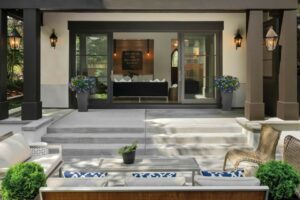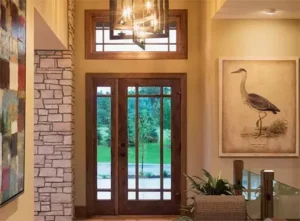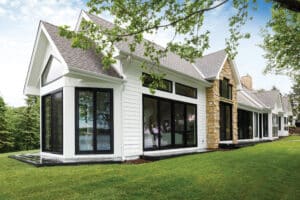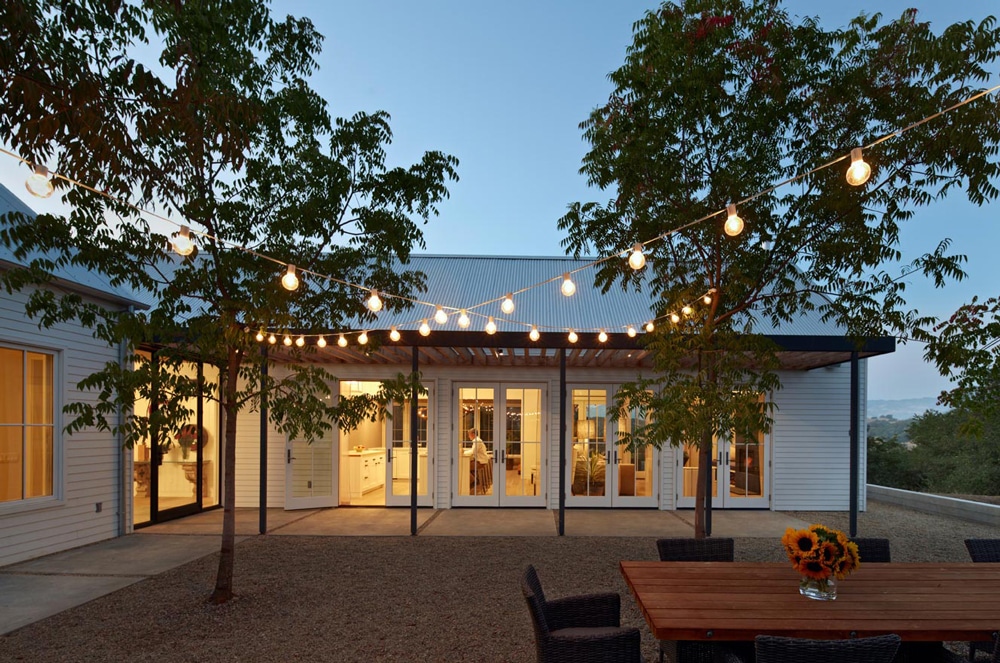
We love glass doors and door manufacturers are offering taller, wider and studier glass doors every year. Glass doors provide light, views and frankly, transparency to see who’s at our door. If you’re mulling over whether to replace your entry door with a glass door, a solid door with sidelites or upgrade your sliding patio doors this blog will help you understand today’s options for glass and entry hardware systems that increase safety.
GLASS SECURITY
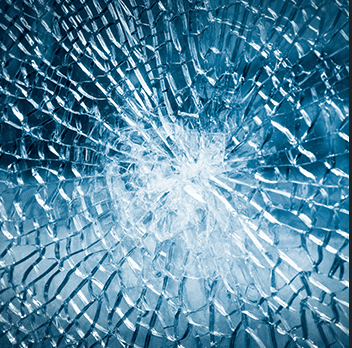
Also known as heat-treated glass, tempered glass is specifically fabricated for usage in areas with a high risk for contact and breakage, like showers, doors or glass near stairs. This glass is more durable than standard glass and does not shatter into large shards when broken, which makes it safer than the commonly used glass. If it does break it will only smash into small bits. Tempered glass has a reputation for toughness, when glass is tempered, it undergoes a process to make it more resilient and shatter-resistant.
For the curious reader, glass is tempered during the manufacturing process by rapidly cooling the outer surfaces with chilled air, while leaving the inner core still viscous. When the glass has completely cooled, the core is in tension and outer layers are in compression. This process makes it four times more resistant to impact than regular (annealed) glass and, if shattered, it fractures perpendicular to the face of the glass into small pebble-size pieces.
Any glazing (glass) in doors has been required by the major building codes to be safety glass since that late 1960s, and by the Consumer Products Safety Council since the about 1977s. So only very old French doors will have regular glass.
Building codes vary by location, but generally speaking, all glass or panels in fixed, operable, swinging, sliding and bifold doors must be constructed from safety glass, regardless of size. In addition, any glass located adjacent to a door within a 24-inch arc of the door must be constructed from safety glass if the bottom edge of the glass is less than 60 inches above the walking surface (floor). The only two exceptions to these rules are decorative glass and a glass panel so small that a 3” ball cannot go through it, meaning, a pane of glass would have to be smaller than 3”.
Art glass (decorative glass) used in doors, sidelights and large windows is exempt from safety glazing requirements if it is leaded, decorated or carved in such a way as to make it clearly visible.
How to recognize Tempered Glass
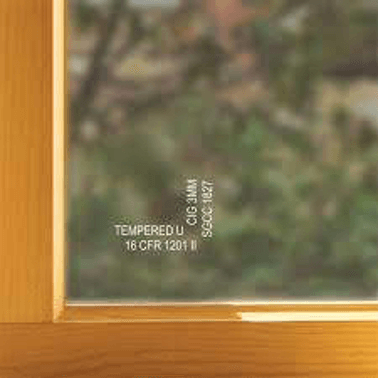
How do you know if your doors are made of safety glass? If they’re older it’s unlikely that they are. You can tell by the etching certifying it is safety glass in the bottom corner of the glass.
Tempered glass must have a small label etched in a corner, officially known as the “glass monogram,” called a “bug” in the construction trades. It identifies the manufacturer name, and the ANSI and CPSC standards under which it was manufactured. The bug may also include an SGCC approval number, which is a voluntary industry certification program.
When you are looking for the bug, remember that it will be in a corner of the glass, very small, and barely legible as it is a light etching of the glass surface. When a door has multiple small glass panes, at least one pane must have the full bug, and the others only need to have a “16 CFR 1201” marking. Sometimes, the bug will be partially or completely concealed by the frame.
Laminated
If you’re more conscious of burglar-resistant glass options, you may want to use a different kind of glass in the doors such as hurricane-rated glass or laminated glass to ward off thieves. Hurricane –rated glass is comprised of two sheets of glass bonded together with a protective interlayer of plastic that is designed to resist impact from missiles (projectiles) during a hurricane. The safety glass sticks together when broken. This glass is stronger than a car windshield, the glass might shatter if a heavy object is thrown into it, but it won’t break to bits. That makes it less likely that an intruder can shatter the glass and unlock the door or walk through the open pane. A burglar would have to strike the glass with a hammer many times before he had a hope of making a hole large enough to reach into. It’s unlikely he would want to risk spending that much time and making that much noise.
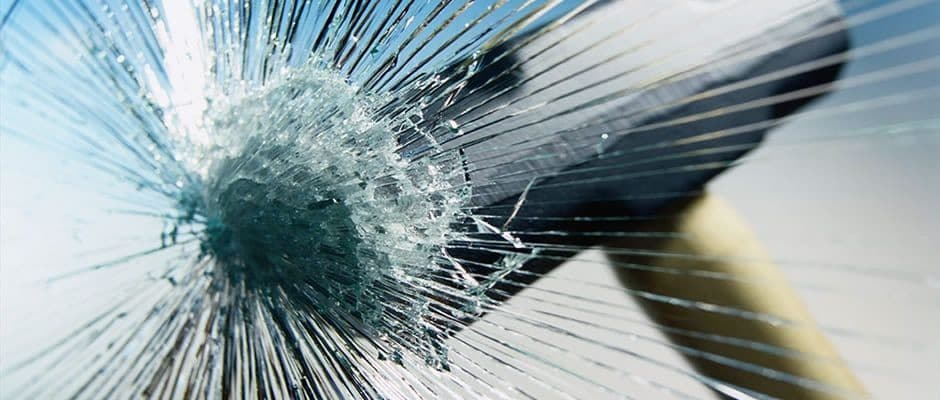
This impact resistant glass costs more but it is such a refined design you can hardly tell a hurricane-rated window from a regular window. They’re becoming mainstream and most contractors will install the durable glass if their customers ask for it.
How to recognize Laminated Glass
How do you recognize laminated glass? It is more difficult to identify than tempered glass. It may not have a bug, because most building codes don’t require it and, if there is a bug, it may reference a DOT (Department of Transportation) approval code. Also, laminated glass can be cut to size after manufacturing, and the bug may have been cut off. Tempered glass will shatter if cut or drilled after manufacturing, and must be tempered to the exact size required, so the bug is there somewhere.
Here’s a tip for you. Industry professionals identify unmarked laminated glass by the multiple reflections visible when you put an object next to the glass. Glass that is not laminated shows only two reflections from the two surfaces of the glass.
Textured Glass can be Laminated
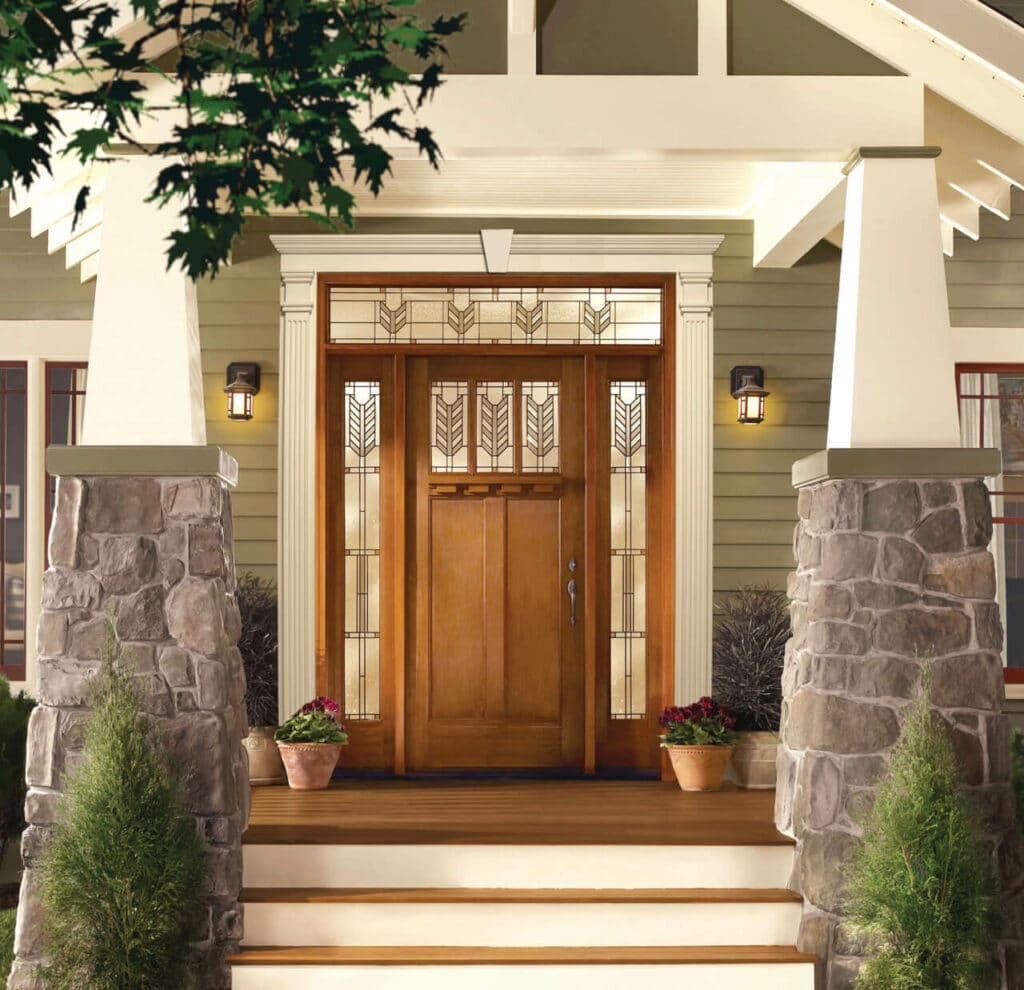
Many of the textured glass patterns offered today are able to be laminated making it an excellent opportunity to use decorative glass instead of just clear glass in applications that require the use of safety glass. Not only are these textured glass patterns safer, the interlayers can also be clear, colored, metallic or other patterns. Decorative laminated glass is ideal door inserts and sidelites to protect against forced entry.
Multiple manufacturers offer laminated glass options. Therma-Tru offers impact-rated glass, made with special laminated glass, is designed for use with our impact-rated doors and our impact lite frame, typically for coastal application or extreme weather conditions.
Coatings (retrofit) Security Film
If your French or sliding patio doors are already installed you still have the option to add an impact resistant solution, a security film to your existing doors. Older sliding glass doors are considered dangerous by some building departments and may be required to be replaced or protected with safety film when the property is sold.
Therma-Tru Door with Sidelites – decorative glass
It is a clear, flexible and impact resistant polyester sheet that is affixed to the inside of the glass. ScotchShield®, manufactured by 3M, is one of several brands of safety film that can be applied to old doors and windows to provide shatter protection. An installer typically adds a small label indicating that the glass now meets the CPSC standard for safety glass after completing the work.
Like laminated glass, an intruder would have a very tough time trying to break through it. The film is usually sold by the foot and is available in several widths and thickness.
DOOR SECURITY
Multi-point locking systems
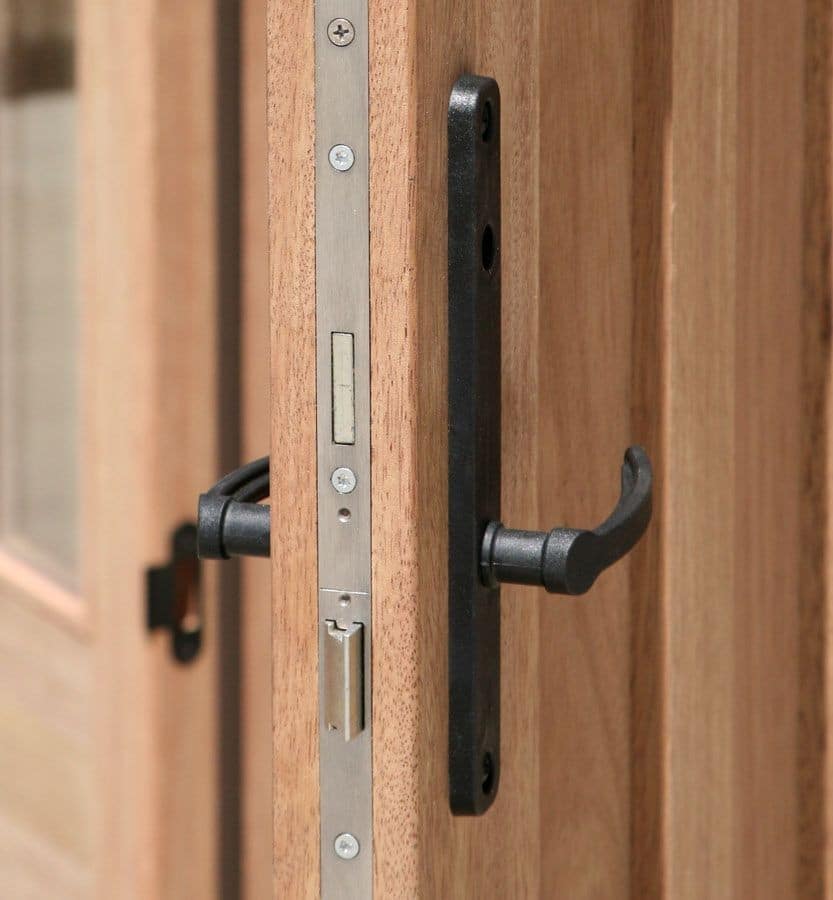
Doors from quality manufacturers like Marvin, Andersen and Pella all come standard with multipoint locking mechanisms for French doors. Sliding patio and oversized scenic doors have a well designed secure locking system as well.
In a nutshell, you get enhanced security by having the door lock into the jamb at multiple points, reducing the ability to push in the door. Mutipoint locks are available in a variety of designs that vary, but generally speaking they include a centrally located deadbolt and a live bolt (latch) and at least two hook bolts and possibly compression bolts. Most locking systems are operated by lifting the door handle from either side of the door and are locked in place by turning the key or interior thumb turn. Some designs have additional bolting into the top and bottom frames for added stability and security. Systems can be automatic or semi-automatic. Automatic locking mechanisms engage the perimeter bolts when the door is closed, without the lever being lifted, whereas semi-automatic mechanisms engage the bolts when the lever is lifted. Entry door manufacturers like Therma-Tru and ProVia are increasingly recognizing the value of multi-point locking systems, adding these options.
With the demand for better security, manufacturers are deploying these systems as standard for French doors, 8 and 10-foot-tall doors and optional for many doors. Getting a good seal around the entire door frame is harder to accomplish with taller doors and the doors are also more likely to warp, but multi-point locking systems can add stability and security.
Multipoint locking systems provide an added layer of security to your front and back doors. Typically, there are at least three locking points on a multipoint system. Multipoint locks extend most, if not, the full height of the door and have multiple locking points along the edge of the door, or often at the top and bottom for French multi-lock door systems.
With a standard locking system, your primary lock is in the center, usually a single deadbolt. This one-inch deadbolt isn’t secure against a basic attack such as being kicked in, especially since wooden door jambs are weak and vulnerable. In contrast, this system divides the forced entry pressure across the full length of the door, rather than only in the center, making it much harder to dislodge.
Handlesets & Bolts:
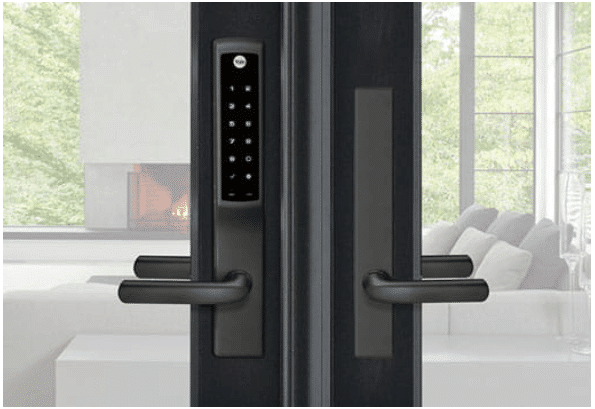
There continues to be new products added to this category of security locks. Therma-Tru recently introduced an easy to engage ‘grip-style’ multi-point locking system with a simple 90-degree twist of a thumbturn (interior) or key (exterior). The product has 3-point engagements.
Smart Locks and Sensors
Check out the options from Andersen or Marvin to further secure your doors with security sensors and locks – like the Yale Assure lock on the right, that integrate with popular security systems to protect your home. These systems can be wired or wireless and send a signal to your integrated smart home security system to indicate if door is closed, locked or unlocked.
“The Times They are A-Changing”, to quote Bob Dylan. We once left our doors unlocked, now we need extra security. Fortunately, door manufacturers have been actively innovating to bring us more security features than ever, many come standard and many more choices to suit homeowner’s exact needs. When you’re ready to upgrade or replace your doors you can confidently navigate your door security choices.

